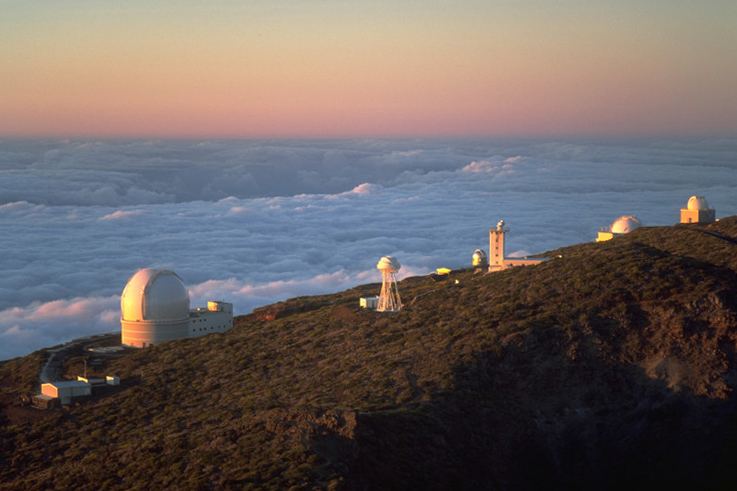Code 950 | Phone +34 922 40 55 00 | |
 | ||
Altitude 2,396 metres (7,861 ft) Website {{URL|example.com|optional display text}} MAGIC (telescope) 2 x 17 m gamma-ray imaging Cherenkov telescopes Gran Telescopio Canarias 10.4 m reflecting telescope Hours Open today · 7AM–8PMWednesday7AM–8PMThursday7AM–8PMFriday7AM–8PMSaturday7AM–8PMSunday7AM–8PMMonday7AM–8PMTuesday7AM–8PMSuggest an edit Organization | ||
Milky way over roque de los muchachos observatory la palma canary islands
Roque de los Muchachos Observatory (Spanish: Observatorio del Roque de los Muchachos, ORM) is an astronomical observatory located in the municipality of Garafía on the island of La Palma in the Canary Islands. The observatory site is operated by the Instituto de Astrofísica de Canarias, based on nearby Tenerife. ORM is part of the European Northern Observatory.
Contents
- Milky way over roque de los muchachos observatory la palma canary islands
- La palma and the roque de los muchachos observatory
- History
- References
The seeing statistics at ORM make it the second-best location for optical and infrared astronomy in the Northern Hemisphere, after Mauna Kea Observatory, Hawaii. The site also has some of the most extensive astronomical facilities in the Northern Hemisphere; its fleet of telescopes includes the 10.4 m Gran Telescopio Canarias, the world's largest single-aperture optical telescope as of July 2009, the William Herschel Telescope (second largest in Europe), and the adaptive optics corrected Swedish 1-m Solar Telescope, which provides the highest resolution solar imaging of any telescope.
La palma and the roque de los muchachos observatory
History
The observatory began operation around 1984 with the Isaac Newton Telescope, which was moved to La Palma from the Royal Greenwich Observatory site at Herstmonceux Castle in Sussex, England. The move was troubled, and it is widely recognized that it would have been cheaper to build a new telescope on-site rather than to move an existing one.
The observatory was first staffed by representatives from Spain, Sweden, Denmark and the United Kingdom. Other countries which became involved later include Germany, Italy, Norway, the Netherlands, Finland, Iceland, and the United States.
The observatory was officially inaugurated on June 29, 1985, by the Spanish royal family and six European heads of state. Four helicopter pads were built at the observatory to allow the dignitaries to arrive in comfort. The observatory has expanded considerably over time, with the 4.2m William Herschel Telescope opened in 1987, the Nordic Optical Telescope in 1988 and several smaller solar or specialised telescopes; the Telescopio Nazionale Galileo opened in 1998 and the Gran Telescopio Canarias opened in 2006, with its full aperture in 2009.
A fire on the mountainside in 1997 damaged one of the gamma-ray telescopes, but subsequent fires in September 2005 and August 2009 did no serious damage to buildings or telescopes.
In 2016, the observatory was announced as the second-choice location for the Thirty Metre Telescope, in the event that the Mauna Kea site is not feasible.
